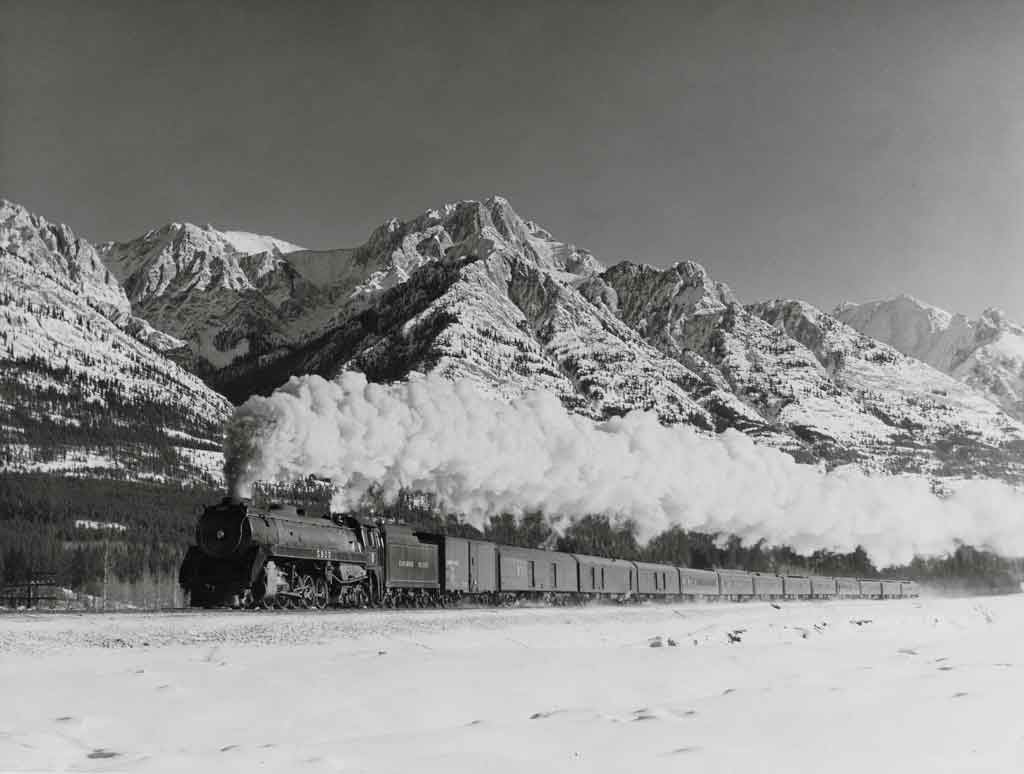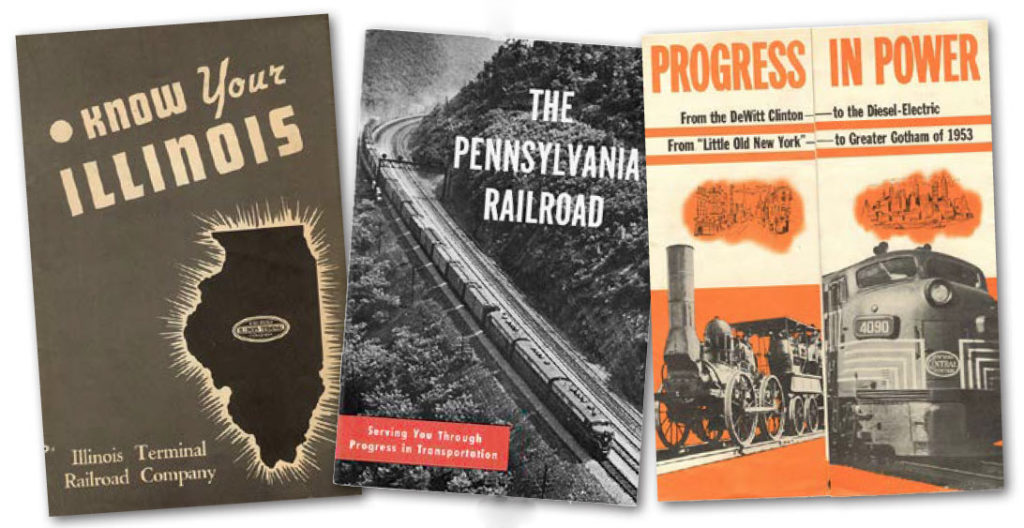
Railroads like Illinois Terminal, Pennsy, and New York Central sent promotional material to author Matejka, and often returned his 15 cents postage as well. How far can you travel for 15 cents? As a child in the early 1960s, I was traveling all over the country from my St. Louis home, thanks to 15 cents I […]
Read More…
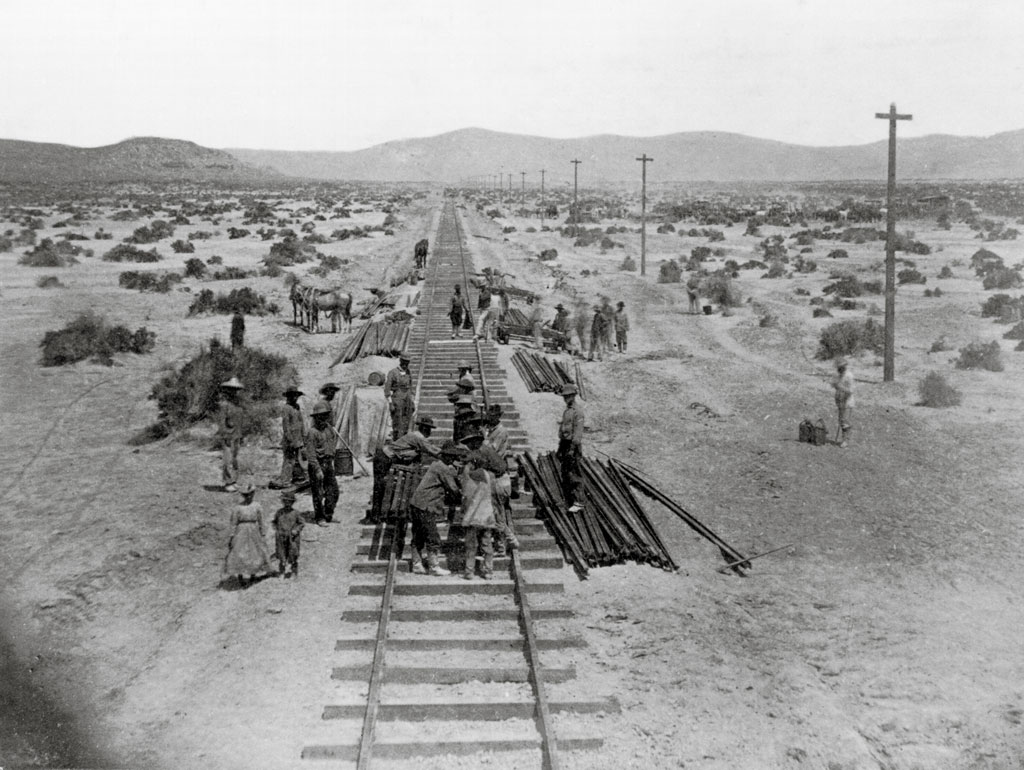
Chinese workers load rail onto a tracklaying car from the piles left by the morning’s supply train. Sixteen rails, a keg of spikes, a keg of nuts and bolts, and 32 splice bars, along with the crew made the load. Horses to pull the car stand ready. The location is Granite Point, Nev., in late […]
Read More…
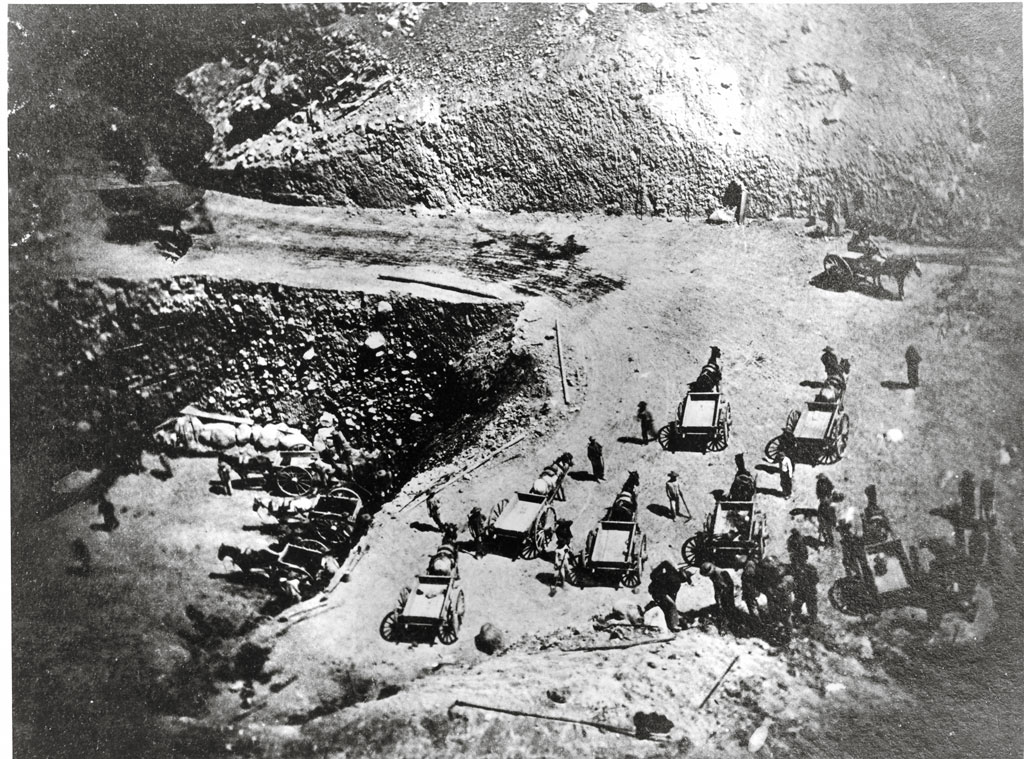
Grading on the Central Pacific was done by hand, relying primarily on Chinese using picks, shovels, and horse-drawn dump carts, though black powder was freely used to break hard soil and move rocks aside. This scene is the 170-foot deep excavation at Prospect Hill, Calif. It dates from summer 1866, when more than a thousand […]
Read More…
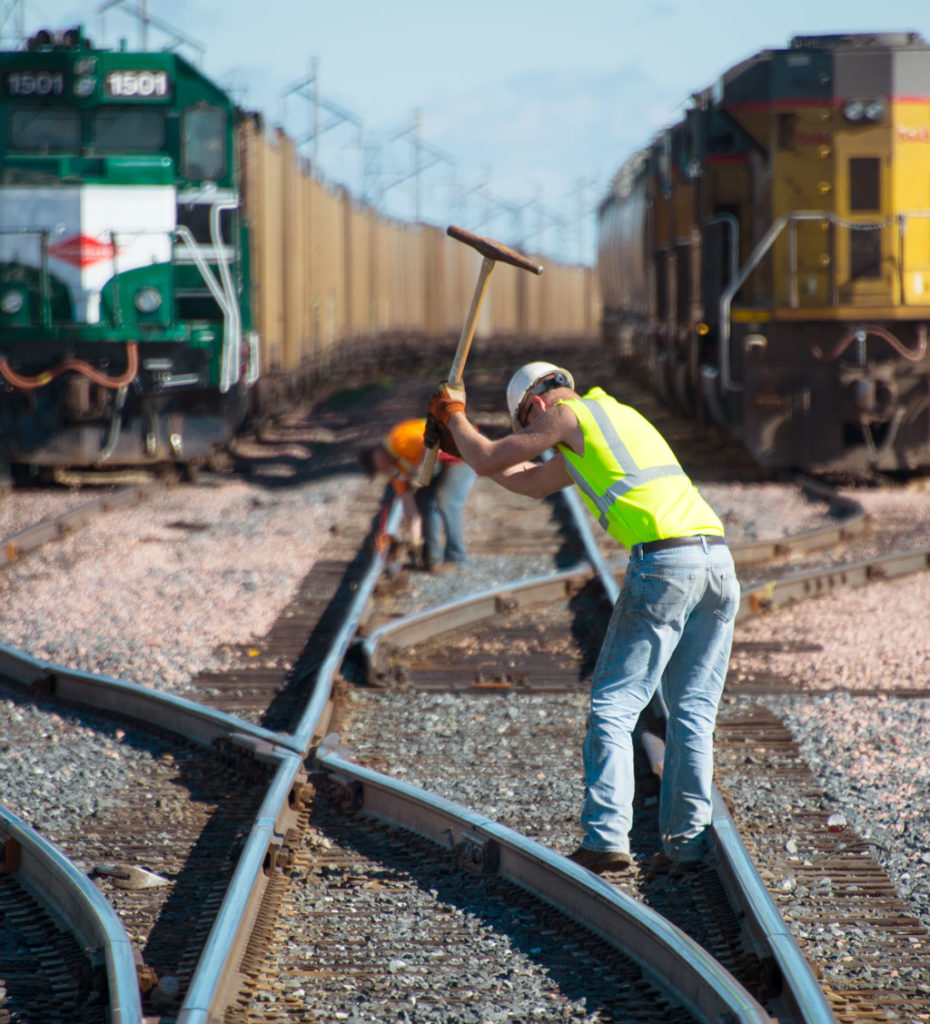
A track worker hammers in spikes on a turnout. Steve Smedley Rusty track spikes near Canadian Pacific tracks at Brookfield, Wis, in 2012. Karl Riek The Golden Spike of the first transcontinental railroad was but one of millions in the nearly 2,000-mile route between Sacramento, Calif., and Omaha, Neb. Spikes date back to the first […]
Read More…

Notable U.S. and Canadian railroad completions Trains: Rick Johnson Promontory Summit, Utah, may have hosted North America’s most famous final-spike ceremony, but the event on May 10, 1869, was not unique. Not all railroads had a completion “moment:” the New York Central is an example of a railroad formed through a series of mergers and […]
Read More…
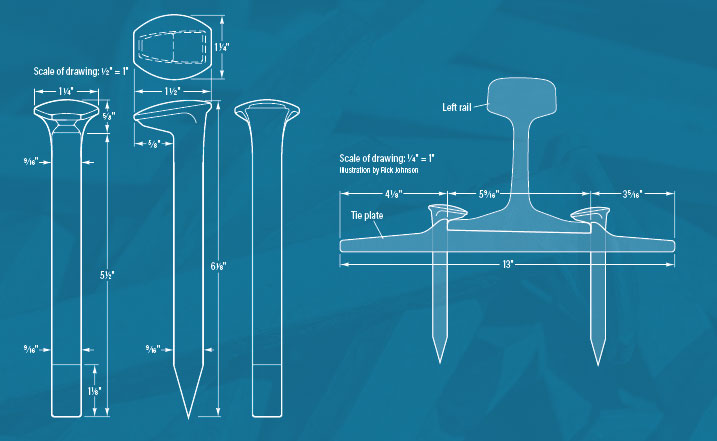
Railroad spike diagram Rick Johnson SPIKE dimensions are precise and have been set by such groups as the American Railway Engineering and Maintenance-of-Way Association for decades. Spikes are made of relatively low-carbon steel, which is softer than the steel used in rail and spike mauls. This is important because when a spike is driven, it […]
Read More…
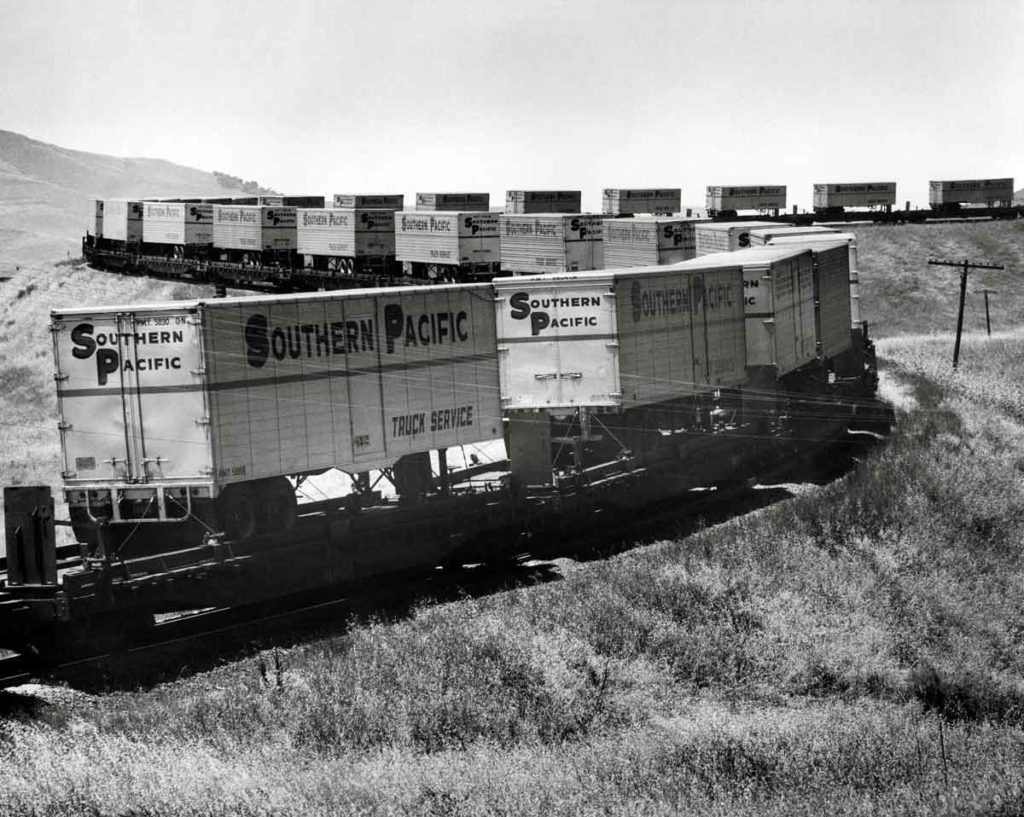
A Southern Pacific piggyback train of modified conventional flatcars with company trailers negotiates Cuesta Grade above San Luis Obispo, Calif., in June 1957. Robert Hale photo […]
Read More…
Workers who built the first Transcontinental Railroad, by hand, in the late 1860s labored through grueling heat, biting winter cold, snow, attacks from Native American tribes, and long, long work days. Learn how they did it with this excerpt from one of Trains’ newest DVD’s, Journey To Promontory, available from the Kalmbach Hobby Store. […]
Read More…
Workers who built the first Transcontinental Railroad, by hand, in the late 1860s labored through grueling heat, biting winter cold, snow, attacks from Native American tribes, and long, long work days. Learn how they did it with this excerpt from one of Trains’ newest DVD’s, Journey To Promontory, available from the Kalmbach Hobby Store. EXCERPT TRANSCRIPT: Dave Seidel, […]
Read More…
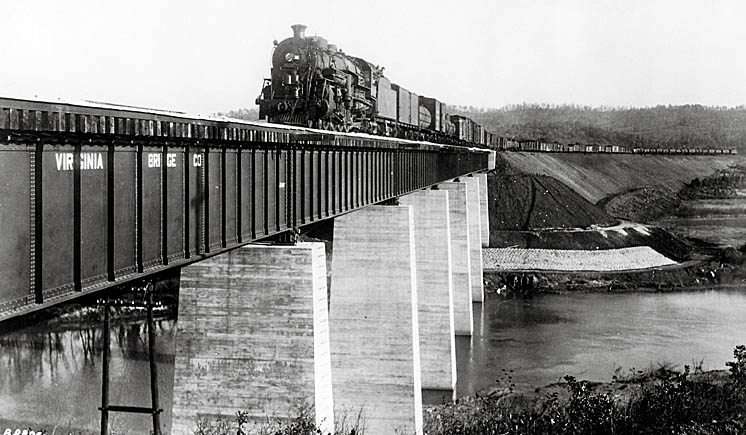
A Nashville, Chattanooga & St. Louis train crosses the Etowah River, soon to be Lake Allatoona, in December 1944. CSX Transportation now operates the line. Trains collection Q Which issue of Trains featured the article about a line relocation on the Western & Atlantic, an early Louisville & Nashville predecessor, at Lake Allatoona, near Cartersville, […]
Read More…
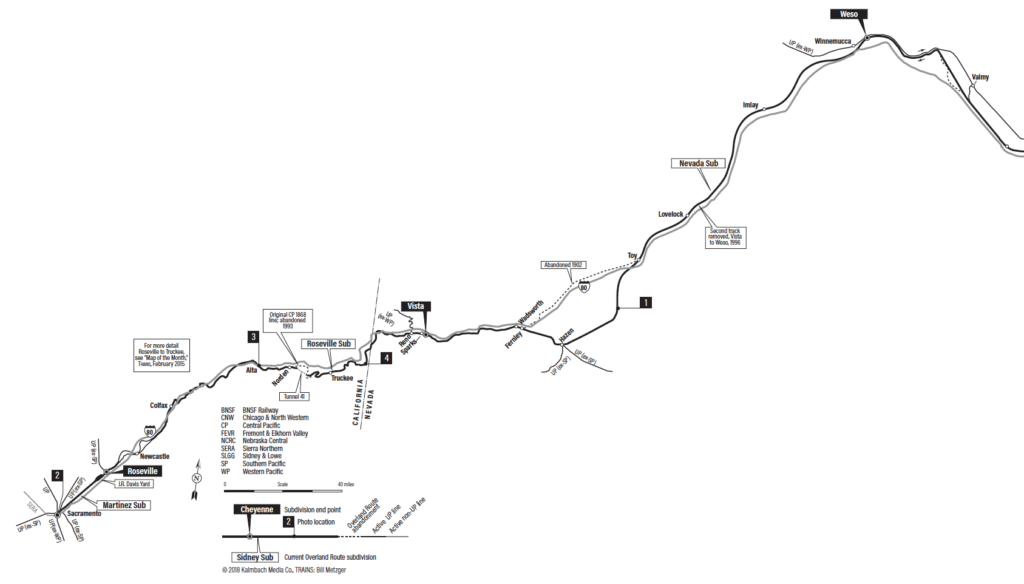
CLICK ON AN IMAGE TO ENLARGE THE MAP California to Nevada Nevada to Utah Utah to Wyoming Wyoming to Nebraska Nebraska to Iowa The first Transcontinental Railroad was a monumental undertaking by the time workers finished it in 1869. Today, tourists and enterprising photographers can visit much of what American ancestors left behind 150 years […]
Read More…







